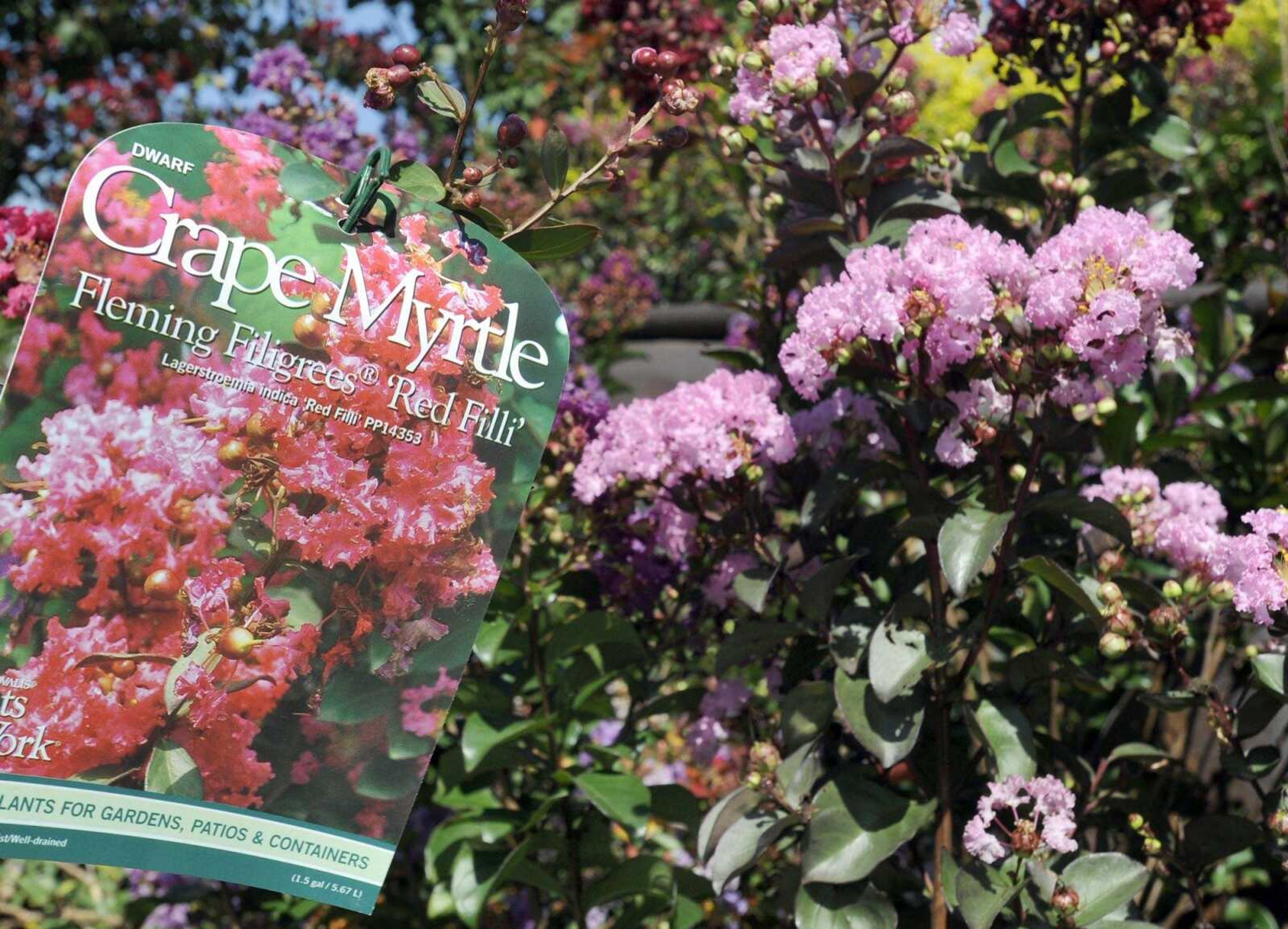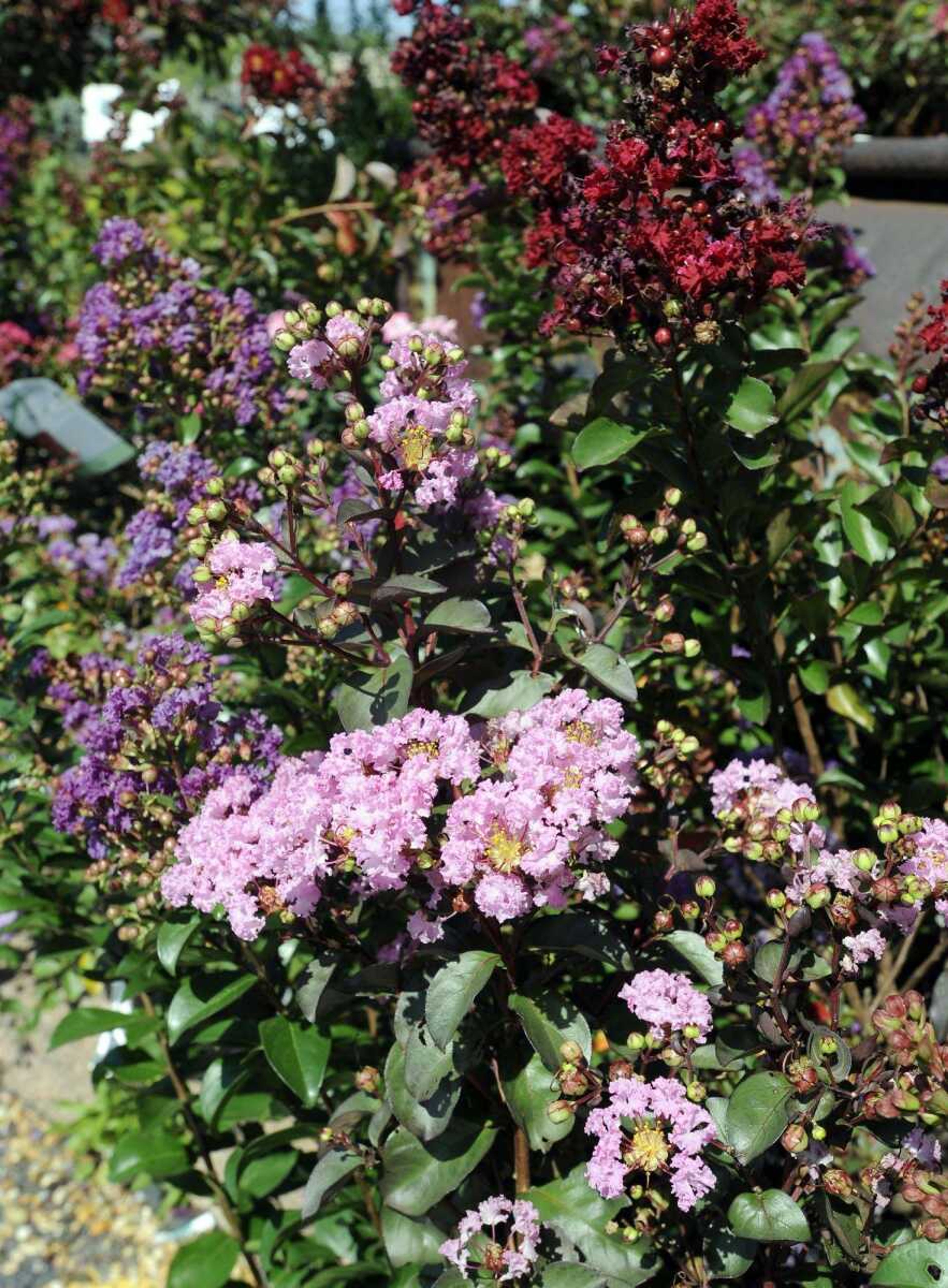Myrtle in distress
Several gardeners recently have complained to me about their crape myrtles. In some cases, the tops died back this spring, and there are just long dead branches sticking up in the air. In May, they were looking for replacements because all their crape myrtles were "dead."...
Several gardeners recently have complained to me about their crape myrtles. In some cases, the tops died back this spring, and there are just long dead branches sticking up in the air. In May, they were looking for replacements because all their crape myrtles were "dead."
If they didn't replace them in May, they were surprised in late June to see some new leaves and branches starting to grow from the bottom up. But the myrtles looked so ugly, they still were looking for replacement plants.
I have talked to other gardeners who are really distraught because their crape myrtles are being attacked year after year by Japanese beetles. One day the plants look great, and the next day they have leaves that look like netting. The only thing left of the leaf is the stem and the veins. They also are looking for replacement plants.
On the other hand, I have a friend who absolutely loves his "crappie myrtles." They may die back over the winter, and they may be Japanese beetle bait, but they come back year after year and bloom their hearts out from late June or July to frost. To him, they are absolutely gorgeous when in full bloom.
If you love "crappie myrtles" as does my buddy, there are a few things you can do to keep them looking good despite late freezes and Japanese beetles.

First, realize that these plants are zone 6 plants. This means they can tolerate some cold, but temperatures in the teens late in the spring will cause dieback but usually not death. So just be patient and wait on them to sprout new shoots and leaves late spring. When that happens just prune out any dead branches and then watch as the summer flower show enfolds.
I would also suggest that you fertilize your crape myrtles in late March or early April with a rose food (I know this sounds odd) such as a 14-12-11 that also contains a systemic insecticide. The nitrogen in the fertilizer will encourage rapid stem and leaf growth in the spring. So if there is a late freeze, the plant can rapidly repair itself.
The phosphorous in the fertilizer will encourage the crape myrtles to set and open a profuse amount of blooms in midsummer. Then you can enjoy the show of color and profusion of blooms for the rest of the season.
The systemic insecticide will be absorbed by the roots and move up into the stems and leaves by late spring or early summer. Its presence in the leaves will result in the demise of any Japanese beetles that decide to gorge themselves on your favorite crape myrtle.
With the idea that issues with crape myrtles can be dealt with, you may want to go to your local garden center and check them out. Crape myrtles come in many different sizes, from 2-feet to 20-feet tall. Most varieties grow erect, but you can also find varieties that spread out while others have a weeping habit.
The plethora of bloom colors is overwhelming. You can select from whites, pinks, reds, purples and lavenders. The combination of different colors and growth habit are mixed and matched in different varieties, so you will find more than 100 varieties available. So select the variety to match your preference.
You can plant crape myrtles in the summer. Just be sure that you amend the soil in the planting bed with peat moss. Open up the compact root system when removing the plant from its pot. Place the plant's root system in the excavated hole and back fill with the combination of soil and peat.
After planting be sure to fertilize with a high phosphorous fertilizer such as a 9-58-8. Dissolve this in water. Then water in the crape myrtle after planting with the fertilizer water. This will encourage rapid rooting.
Now you can sit back, relax, and enjoy the show of color for the rest of the growing season.
Connect with the Southeast Missourian Newsroom:
For corrections to this story or other insights for the editor, click here. To submit a letter to the editor, click here. To learn about the Southeast Missourian’s AI Policy, click here.










